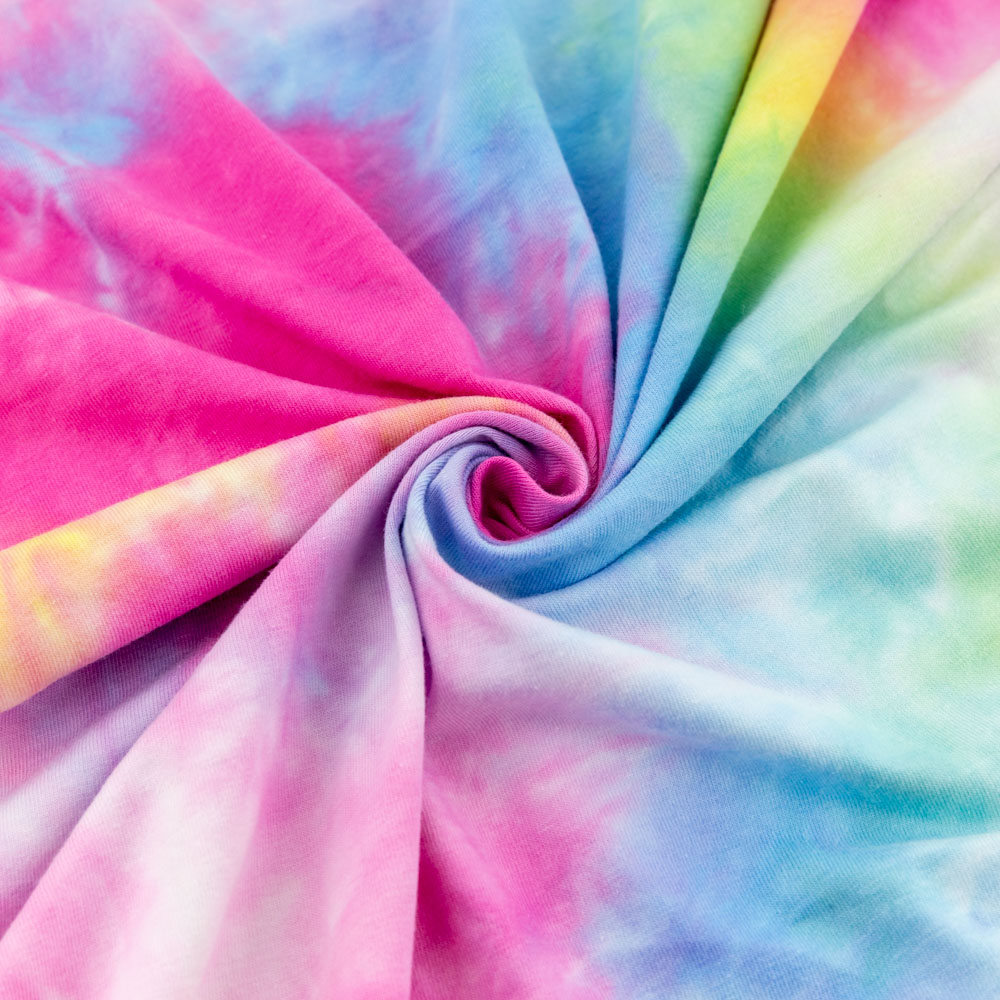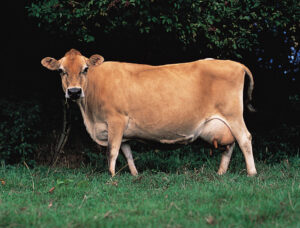Jersey material is a popular choice for clothing due to its softness, durability, and breathability. It is commonly used for making t-shirts, dresses, and sportswear. One of the latest trends in fashion is tie-dye, a technique that involves twisting, folding, or crumpling fabric and then applying dye to create vibrant and unique patterns. However, many people wonder if tie-dyeing can be done on jersey material. In this article, we will explore whether you can tie-dye jersey material and provide you with valuable insights on how to do it effectively.
Understanding Jersey Material
Before we dive into the world of tie-dyeing, let’s first understand what jersey material is. Jersey refers to a type of knit fabric that is made using a combination of cotton, wool, or synthetic fibers. It is known for its stretchiness, softness, and breathability. Jersey fabric is commonly used in the production of t-shirts, athletic wear, and casual dresses.
The Tie-Dyeing Process
Tie-dyeing is a technique that involves folding, twisting, or crumpling fabric and then applying dye to create unique patterns. The fabric is secured with rubber bands or strings to create different sections that will absorb the dye in different ways. The dye is then applied to the fabric, allowing it to seep into the folds and crevices, resulting in vibrant and eye-catching designs.
The tie-dyeing process can be done using various dyes, including natural dyes like plant-based dyes or synthetic dyes like fiber-reactive dyes. The choice of dye will depend on personal preference and the desired outcome. It is important to use dyes that are safe to use on the specific fabric you are working with, as some dyes may not adhere well or may cause damage to certain fabrics.
Can You Tie Dye Jersey Material?
The answer is a resounding yes! Jersey material is an excellent choice for tie-dyeing. Its soft and absorbent nature allows the dye to penetrate the fabric easily, resulting in vibrant and long-lasting colors. The stretchiness of jersey fabric also adds an interesting element to tie-dye patterns, as the fabric can be manipulated and stretched to create unique designs.
When tie-dyeing jersey material, it is important to keep in mind the type of dye you use. It is recommended to use fiber-reactive dyes, as they are specifically designed to bond with natural fibers like cotton. These dyes provide excellent color vibrancy and durability, ensuring that your tie-dye creations will last even after multiple washes. It is advisable to follow the dye manufacturer’s instructions to achieve the best results.
Preparing Jersey Material for Tie-Dyeing
Before you start tie-dyeing your jersey material, it is crucial to properly prepare the fabric. Here are some steps to follow:
- Wash the fabric: It is important to wash the jersey fabric before tie-dyeing to remove any dirt, oils, or chemicals that may interfere with the dye’s absorption. Use a gentle detergent and avoid using fabric softeners, as they can create a barrier that prevents the dye from penetrating the fabric effectively.
- Dampen the fabric: Dampening the fabric before tie-dyeing can help the dye spread more evenly and create smoother color transitions. You can either mist the fabric with water or soak it in a mixture of water and soda ash, which can enhance the dye’s color retention.
- Prepare the dye: Follow the instructions provided by the dye manufacturer to prepare the dye. Some dyes may require mixing with water or other chemicals before use. Ensure that you mix the dye thoroughly to achieve consistent color results.
Tie-Dyeing Techniques for Jersey Material
Now that you have prepared your jersey fabric, it’s time to explore some tie-dyeing techniques that work well with this material. Here are a few popular techniques:
- Spiral: The spiral technique involves twisting the fabric from the center and securing it with rubber bands. This creates a spiral pattern that radiates from the center of the fabric. The stretchiness of jersey material allows for tighter twists and more defined spirals.
- Accordion fold: The accordion fold technique involves folding the fabric back and forth like an accordion and securing it with rubber bands. This creates parallel lines or pleats that can be dyed in different colors for a striking effect.
- Crinkle: The crinkle technique involves crumpling the fabric into a ball and securing it with rubber bands. This creates a random and textured pattern that can be enhanced with multiple dye colors.
These are just a few examples of tie-dyeing techniques that can be used on jersey material. Feel free to experiment with different folding, twisting, and crumpling techniques to create your own unique designs.
Tie-Dye Care and Maintenance
After tie-dyeing your jersey material, it is important to properly care for and maintain the fabric to ensure the longevity of the colors. Here are some tips:
- Allow the dye to set: After applying the dye, it is crucial to let it sit on the fabric for the recommended time. This allows the dye to fully bond with the fibers, resulting in vibrant and long-lasting colors.
- Rinse and wash: Once the dye has set, rinse the fabric thoroughly to remove any excess dye. After rinsing, wash the fabric separately using a gentle detergent and cold water. Avoid using bleach or harsh chemicals, as they can fade or damage the colors.
- Dry properly: To maintain the colors, it is advisable to air dry the tie-dyed jersey fabric. Direct sunlight can cause fading, so it is best to dry the fabric in a shaded area. Avoid using a dryer, as the heat can also fade the colors.
- Iron with care: If you need to iron your tie-dyed jersey fabric, it is recommended to iron it inside out using a low heat setting. This helps to preserve the colors and prevent any accidental smudging or fading.
Conclusion
Tie-dyeing jersey material is not only possible but also highly recommended. Jersey fabric’s softness, stretchiness, and absorbency make it an ideal canvas for vibrant tie-dye designs. By following the proper preparation, dyeing techniques, and care instructions, you can create stunning and long-lasting tie-dye creations on jersey fabric.
Remember to choose the right dye for jersey material and experiment with various folding and twisting techniques to achieve unique patterns. With a little creativity and care, you can transform your plain jersey garments into eye-catching fashion statements.
FAQs:
1. Can I tie-dye polyester jersey material?
No, polyester jersey material is not suitable for tie-dyeing. Polyester is a synthetic fiber that does not absorb dyes like natural fibers do. Tie-dyeing requires fabrics that can absorb and hold the dye for vibrant results, which is not possible with polyester.
2. Can I tie-dye a jersey dress?
Absolutely! Jersey dresses are perfect for tie-dyeing. The soft and stretchy nature of jersey fabric allows for beautiful and comfortable tie-dye designs on dresses. Just make sure to follow the proper preparation and care instructions to maintain the quality of the dress.
3. Can I mix different dye colors on jersey material?
Yes, you can mix different dye colors on jersey material to create unique and multi-colored tie-dye designs. Experiment with different color combinations and techniques to achieve your desired look.
4. Can I tie-dye a jersey hoodie?
Yes, a jersey hoodie is a great choice for tie-dyeing. The thicker fabric of a hoodie can result in more defined patterns and color variations. Follow the same tie-dyeing techniques and care instructions mentioned earlier to achieve the best results.
5. Can I tie-dye a jersey material using natural dyes?
Yes, you can use natural dyes to tie-dye jersey material. Natural dyes provide a more eco-friendly option and can create beautiful earthy tones. However, keep in mind that natural dyes may yield different results compared to synthetic dyes, so it’s essential to experiment and test them before dyeing the entire fabric.
Summary
Tie-dyeing jersey material is not only possible but also highly recommended. Jersey fabric’s softness, stretchiness, and absorbency make it an ideal canvas for vibrant tie-dye designs. By following the proper preparation, dyeing techniques, and care instructions, you can create stunning and long-lasting tie-dye creations on jersey fabric. Remember to choose the right dye for jersey material and experiment with various folding and twisting techniques to achieve unique patterns. With a little creativity and care, you can transform your plain jersey garments into eye-catching fashion statements.



